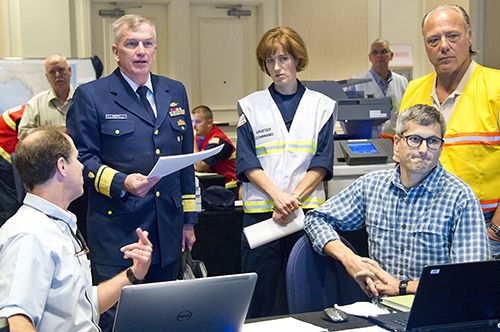Hurricane Marine Debris and Pollution Response
OCTOBER 2, 2017--NOAA’s Office of Response and Restoration continues to focus on assessment of vessels containing potential pollution sources (such as a boat that is leaking oil) that have washed ashore or sunk as a result of Hurricane Irma and Maria.
In addition to scientific support staff in Florida, OR&R now has staff on-scene in Puerto Rico to address any marine debris that may be a source of pollution.
While search and rescue and humanitarian responses are ongoing, the NOAA Marine Debris Program, with other organizations, is gathering critical information, maps and debris reports to start the long process of addressing the non-polluting storm debris. Once impacts are assessed, priority items for removal can be identified and a strategy for removal created.
On the morning of October 2, USCG Admiral Peter Brown visited the Unified Command (UC) in Miami, Florida. While there, he was briefed on various NOAA products being used to provide scientific support for the response to the recent hurricane damage. The Unified Command is responsible for overall management of the Emergency Support Function (ESF10) incident response, and directs incident activities including the development and implementation of all hurricane response activities in Florida.
Several NOAA line offices are supporting the response including Florida Keys National Marine Sanctuaries, the NOAA Marine Debris Program, and the Office of Response and Restoration Emergency Response Division.
 An official website of the United States government.
An official website of the United States government. 
